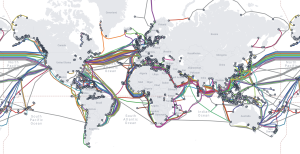GEO Satellites: Revolutionizing Global Communication and Navigation
GEO satellites, or Geostationary satellites, are a type of satellite that orbits the Earth at an altitude of approximately 36,000 kilometers, remaining stationary relative to a fixed point on the equator. This unique characteristic allows GEO satellites to provide continuous coverage of a specific region, making them ideal for a wide range of applications, including global communication, navigation, and weather forecasting.
GEO satellites have been in use for several decades, with the first GEO satellite, Syncom 2, launched in 1963. Since then, the technology has evolved significantly, with modern GEO satellites offering higher bandwidth, greater capacity, and improved performance. Today, GEO satellites play a critical role in global communication, providing connectivity to remote and underserved areas, as well as supporting a wide range of industries, including aviation, maritime, and finance.
Benefits and Advantages of GEO Satellites
The benefits and advantages of GEO satellites are numerous. One of the primary advantages is their ability to provide continuous coverage of a specific region, making them ideal for applications that require high availability and reliability. GEO satellites also offer high-bandwidth connectivity, making them suitable for applications that require large amounts of data to be transmitted, such as video streaming and online gaming.
In addition to their technical benefits, GEO satellites also offer a number of economic and social advantages. For example, they can provide connectivity to remote and underserved areas, bridging the digital divide and promoting economic development. They can also support a wide range of industries, including healthcare, education, and finance, by providing reliable and secure communication services.
Applications of GEO Satellites
GEO satellites have a wide range of applications, including global communication, navigation, and weather forecasting. They are used to provide connectivity to remote and underserved areas, as well as to support a wide range of industries, including aviation, maritime, and finance. GEO satellites are also used for Earth observation, providing valuable data and images of the Earth’s surface, which can be used for a variety of applications, including environmental monitoring, disaster response, and urban planning.
In addition to their practical applications, GEO satellites also play a critical role in scientific research, providing valuable data and insights into the Earth’s climate, weather patterns, and natural resources. They are also used for space exploration, providing communication services for spacecraft and supporting the development of new space technologies.
Future of GEO Satellites
The future of GEO satellites is bright, with ongoing advancements in technology and innovation. Next-generation GEO satellites will offer even higher bandwidth, greater capacity, and improved performance, making them suitable for a wide range of new and emerging applications, including 5G networks, IoT, and cloud computing.
In addition to their technical advancements, GEO satellites will also play a critical role in addressing some of the world’s most pressing challenges, including climate change, sustainable development, and disaster response. They will provide valuable data and insights into the Earth’s climate, weather patterns, and natural resources, supporting the development of new strategies and solutions for mitigating and adapting to these challenges.



